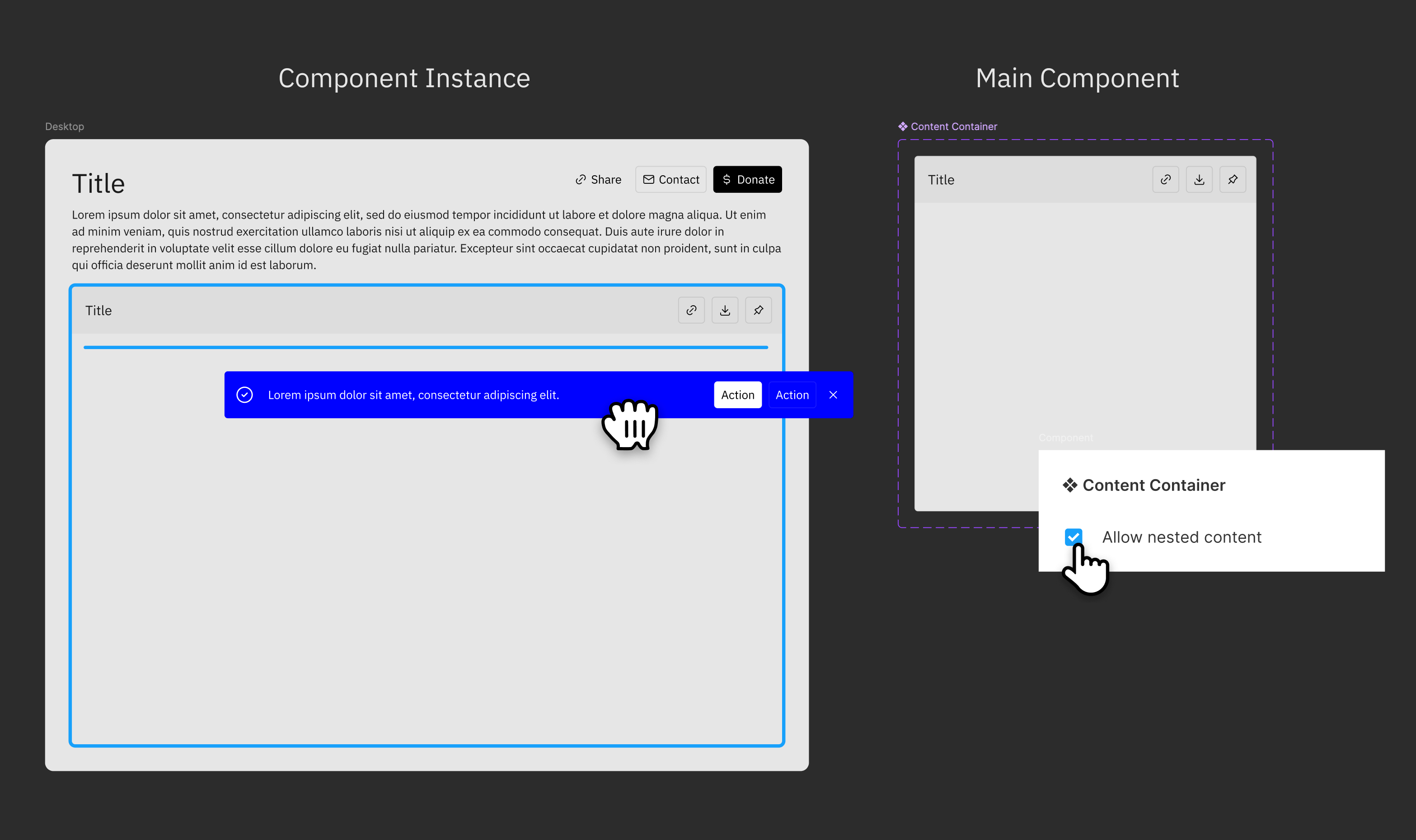Allow users to toggle a setting for components to allow freely adding/rearranging nested contents instead of relying on the ‘slot component’ workaround or nesting a dozen possible UI elements with boolean toggle ‘Hide/Show’ variants.
This would be especially helpful for container/sheet/section components that really only need to define radius/border/spacing/padding.

